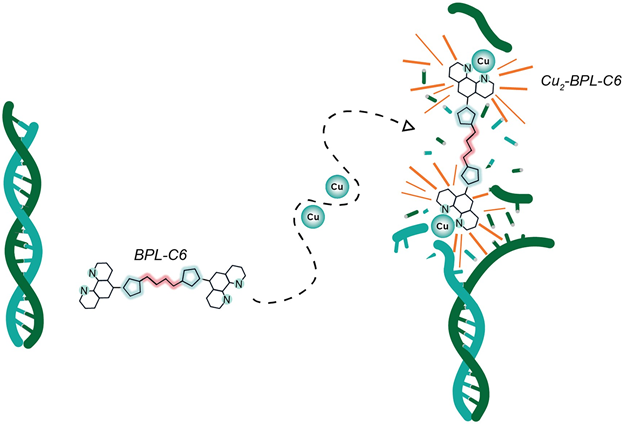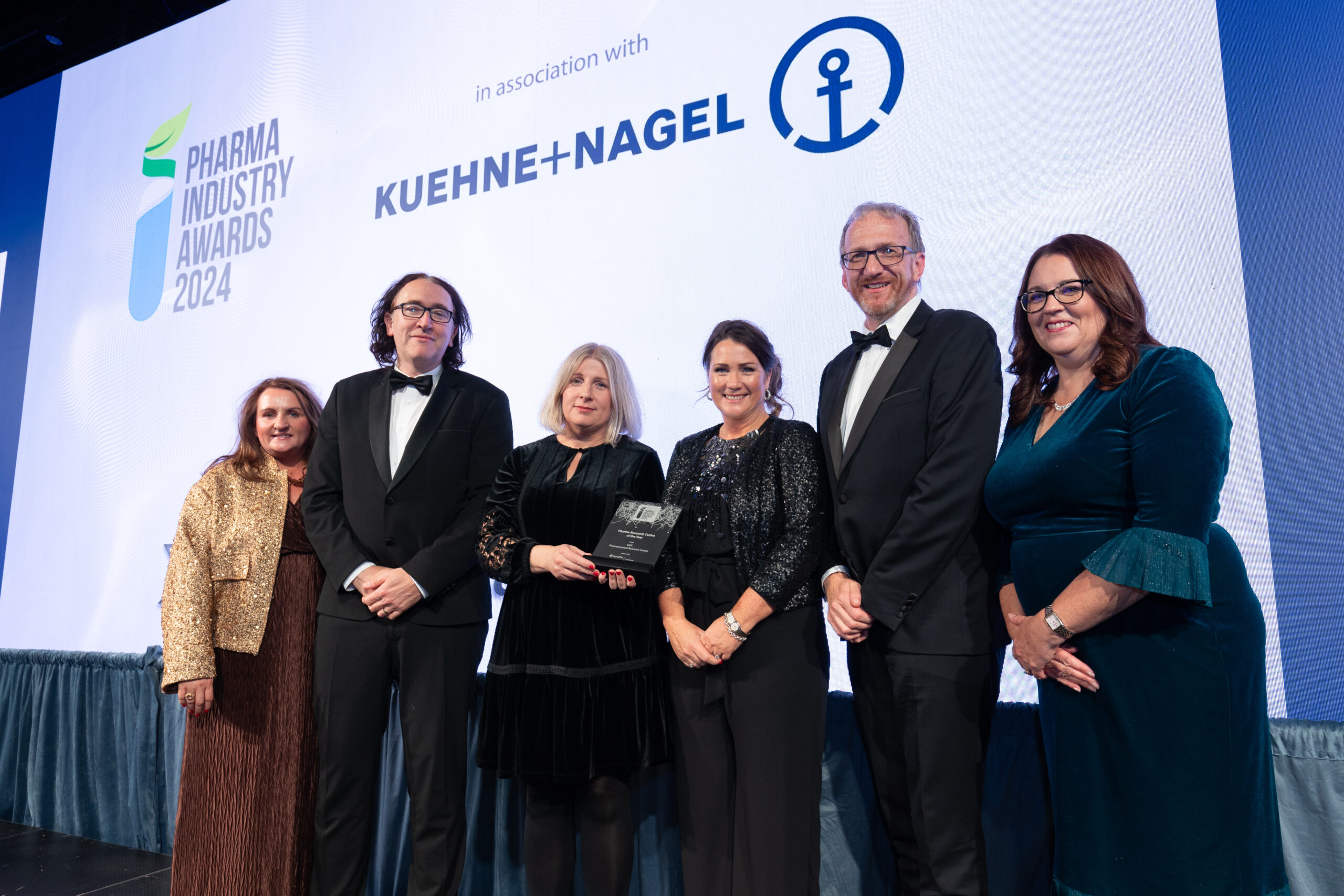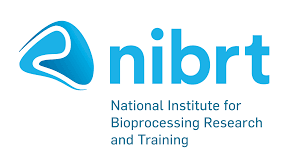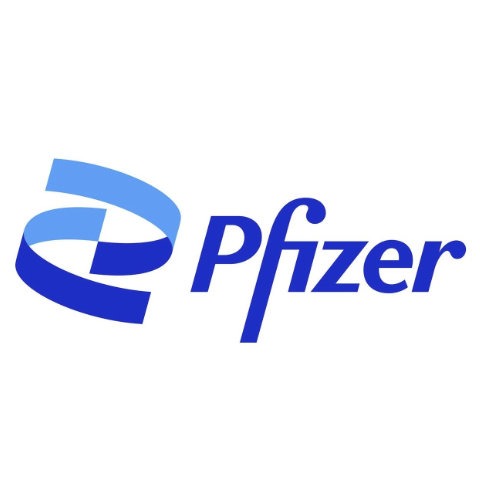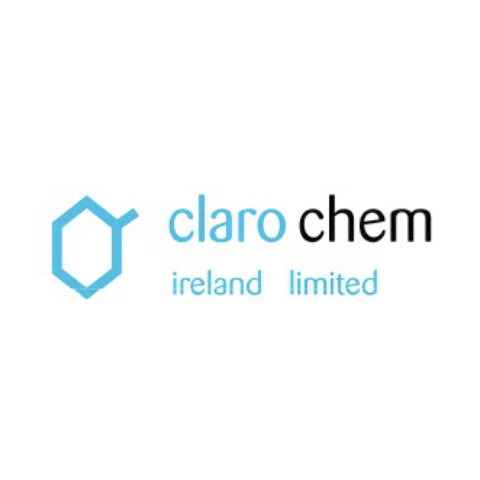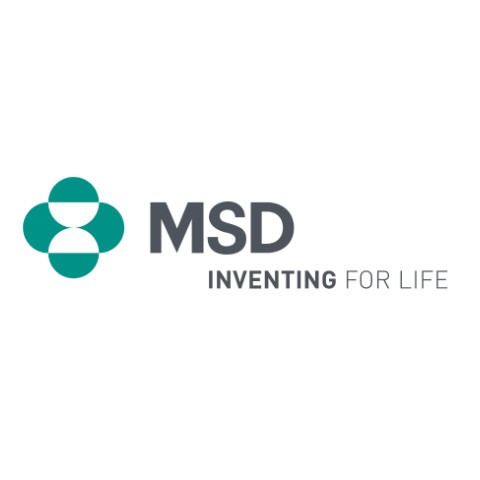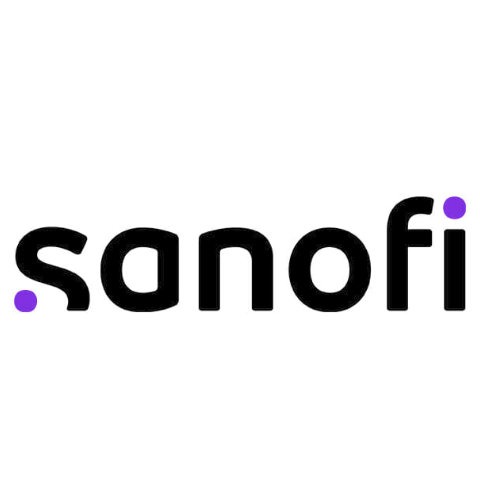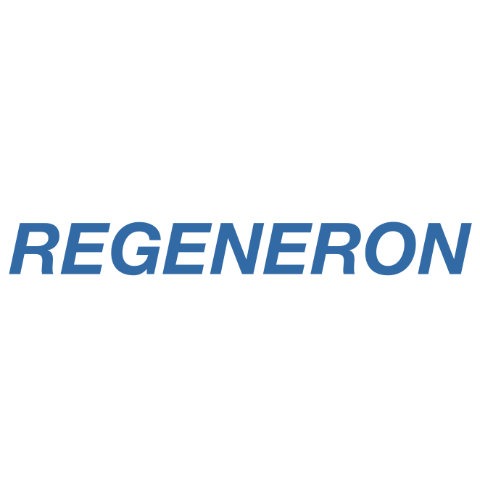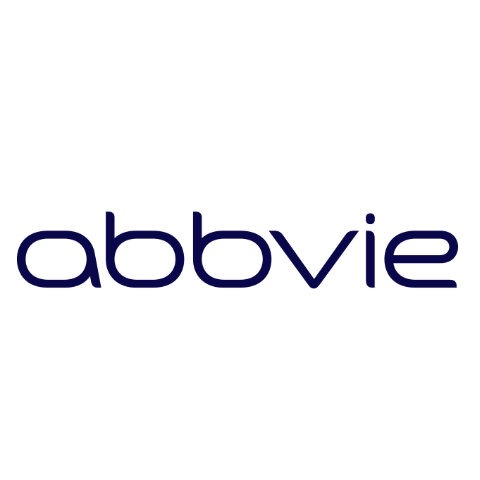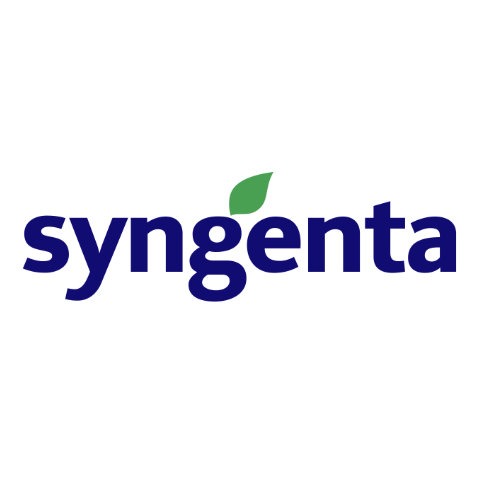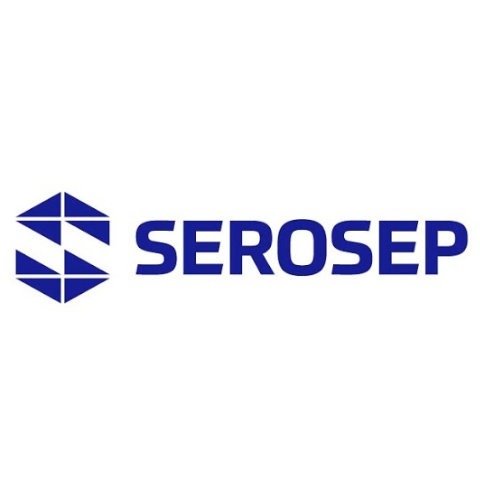A paper titled “A Click Chemistry‐Based Artificial Metallo‐Nuclease” was just published in Angewandte Chemie by Prof. Andrew Kellett, Alex Gibney, Dublin City University and co-workers in SSPC, Chalmers University of Technology, and the University of Southern Denmark. The paper was highlighted on the journal cover and was identified as a “hot paper” due to the significant findings reported. The paper reports the development of a new molecular scissors (or artificial metallo-nuclease) that can cut duplex DNA. The DNA scissors is called TC-Thio and it binds with copper to become a powerful DNA damaging agent.
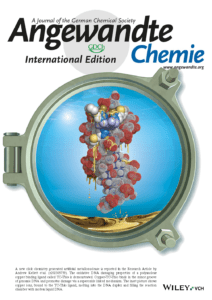
Introduction to TC-Thio and its interactions with DNA:
TC-Thio is a product of click chemistry and is designed to coordinate with both copper(II) and copper(I) redox pairs, offering enhanced DNA binding properties. The compound was developed using a Tri-Click scaffold containing three discrete triazole-thiophene planar groups. The structure of the molecule was identified using X-ray crystallography in collaboration with Prof. Vickie McKee and Prof. Christine McKenzie at the University of Southern Denmark. With copper bound, TC-Thio becomes a potent DNA binding and cleaving agent.
Mechanistic and biological properties:
Mechanistic studies with TC-Thio reveal that DNA recognition occurs exclusively at the minor groove of the DNA duplex, with subsequent oxidative DNA damage being promoted through a superoxide- and peroxide-dependent pathway. Single molecule imaging of DNA isolated from peripheral blood mononuclear cells – performed in collaboration with Prof. Fredik Westerlund in Chalmers University of Technology, Sweden – shows that copper-bound TC-Thio has activity comparable to the clinical drug temozolomide. This activity results in DNA damage that is recognised by a combination of base excision repair (BER) enzymes.
Clinical relevance:
In-cell experiments showed that copper-TC-Thio produces a range of oxidative DNA lesions. It possesses an activity profile similar to the clinically approved drug temozolomide but with a dependency on the redox environment. The development of copper-TC-Thio demonstrates the potential of click chemistry in designing new metal-based drugs, paving the way for the development of clinically relevant and structurally diverse agents using environmentally friendly and cost-effective methodologies. Overall, these findings highlight the potential of TC-Thio as a promising candidate in the realm of artificial metallo-nucleases, with the ability to bind and cleave DNA effectively. The compound’s mechanism of action and its comparison with clinically approved drugs suggest its potential therapeutic applications in the future. The Kellett lab, in collaboration with the SSPC, is now focused on translating these exciting results to the clinic.
Links:
Paper (open access): https://doi.org/10.1002/anie.202305759
Cover (open access): https://doi.org/10.1002/anie.202310432






